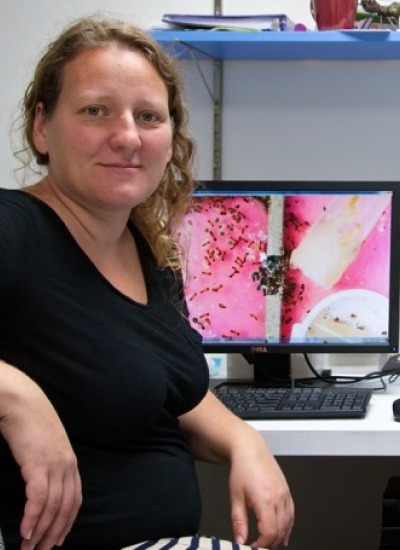Anna R Dornhaus
Publications
Abstract:
Flowers are multisensory displays used by plants to influence the behavior of pollinators. Although we know a great deal about how individual signal components are produced by plants and detected or learned by pollinators, very few experiments directly address the function of floral signal complexity, i.e. how the multicomponent nature of these signals benefits plant or pollinator. Yet, experimental psychology suggests that increasing complexity can enhance subjects' ability to detect, learn and remember stimuli, and the plant's reproductive success depends upon ensuring that pollinators learn their signals and so transport pollen to other similar (conspecific) flowers. Here we explore functional hypotheses for why plants invest in complex floral displays, focusing on hypotheses in which floral signals interact to promote pollinator learning and memory. Specifically, we discuss how an attention-altering or context-providing function of one signal may promote acquisition or recall of a second signal. Although we focus on communication between plants and pollinators, these process-based hypotheses should apply to any situation where a sender benefits from enhancing a receiver's acquisition or recall of information. © 2011 Current Zoology.
Abstract:
1. In ant social parasitism, the process by which parasite-host systems evolved and the types of invasion mechanisms parasites use are being debated. Emery's rule, for example, states that social parasites are the closest relatives to their hosts. The present study uses previously published data to test whether Emery's rule applies equally to all parasitism types (i.e. xenobiosis, temporary, dulosis, and inquilinism). In addition, this study also investigates other links between parasite-host relatedness and host biology, which has implications for understanding the invasion mechanisms used by certain parasites. 2. We find that xenobiotic parasites typically use distantly-related host species that are of at least medium colony size. Temporary parasites often have multiple host species that are very closely related to the parasite and hosts with medium-size colonies. Dulotic parasites frequently have multiple host species that are slightly less related and of any size. Lastly, inquiline parasites tend to have a single, very closely related, host species with medium-size colonies. 3. Parasites tend to be more closely related to host species if they have a single host species or when the host has a large colony size. In contrast, parasites with multiple host species or hosts of small colony size tend to be less related to their hosts. 4. This study is the first to examine trends in ant social parasitism across all known parasite species. Our meta-analysis shows that Emery's rule applies to inquilinism and temporary parasitism, but not to dulosis and xenobiosis. Our results also suggest that both parasitism type and parasite-host relatedness predict the number of hosts and host colony size. It may be that a chemical mimicry mechanism allows invasion of large host colonies, but requires close relatedness of parasite and host, and concentration on a single host species. © 2008 The Authors.
Abstract:
Animals searching for food, mates, or a home often need to decide when to stop looking and choose the best option found so far. By re-analyzing experimental data from experiments by Mallon et al. (Behav Ecol Sociobiol 50:352-359, 2001), we demonstrate that house-hunting ant colonies are gradually more committed to new nests during the emigration. Early in house-hunting, individual ants were flexibly committed to new nest sites. However, when carrying to a new nest had started, ants hardly ever switched preference. Using a theoretical model based on experimental data, we test at which stage flexible commitment influences speed and accuracy most. We demonstrate that ant colonies have found a good compromise between impatience and procrastination. Early flexibility combined with later rigidity is identically effective as other strategies that include flexible commitment, but it is particularly good when emigration conditions are harsh. © 2006 Springer-Verlag.


